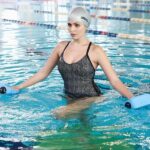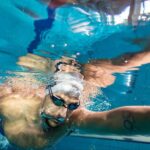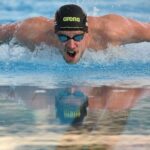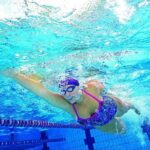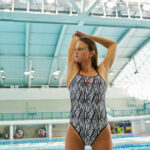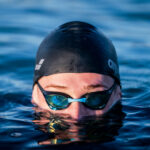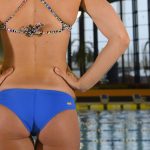How to write a training plan
An arena coach explains how to write a training plan. Here are all the tips you need to devise a training session to make the most of your time.
In this article, I would like to explain how I see training. Not so much in terms of drills to be done, but how I actually organise training sessions for my competitive/masters swimmers and triathletes.
Why do I think this is so important? Firstly, because having a “schedule”, a kind of routine or guidelines for daily workouts, makes training easier and, secondly, it allows you to focus more easily on the kind of progression we are always talking about.
WARM-UP
The first part of training is the warm-up. This is an extremely important phase, because it is when you start to get all the muscles you will be using properly warmed-up and ready to use. I usually suggest a distance of between 300-500 m, swum anyway you want or, more often than not, alternating relaxed swimming with swimming focusing on your arm stroke. For example, freestyle with underwater recovery or single-arm freestyle. So, my athletes get to alternate things they enjoy (free swimming) with more carefully controlled elements.
TECHNIQUE AND LEG WORK
The second stage is generally working on technique. During this phase I assign both specific technique drills for all the strokes and sculling drills in various positions. From my viewpoint, this is the best time to work on technique, because after they have warmed up, I have their full attention and willingness to focus on the tiniest details of the drills I assign them.
This is when they perform their first leg drills, usually with a snorkel or without a board, and when I ask my swimmers to concentrate on their body position in the water and the underwater phases.
Technique work generally concludes with drills in a hypoxic state designed to work on their lung capacity. A typical session might be 6 x 50 m freestyle breathing every 3/5/7 arm strokes, alternating their breathing every 50 m
PRE-SET and MAIN SESSION
The third stage is the main session. Depending on the metabolic stimulus I decide to impart, I start with a pre-set or further specific muscle-activation drills.
- if the main session is predominantly aerobic (10 x 200 m with 20” recovery), the pre-set will involve some progressions or changes of pace (12 x 50 #4 x progression 1-4 #4 x 25 m hard + 25 slow #4x 15 m sprint without breathing)
- if the main session focuses on aerobic power (2 or 3 sets of 5 x 100 fast), the pre-set will focus on work alternating hypoxic stimuli (4 x 150 focusing on the pull phase, breathing 3/5/7 times every 50 m with a relatively short recovery) or speed work (4 x 50 pull prog 1-4 + 4×25 hard favourite stroke with 20” recovery for 2 or 3 sets).
- if the main set is at race pace or involves a build-up of lactic acid (6 x 50 @ 1.20, all fast for 2 or 3 sets), the pre-set will include fast simulation exercises (head up like a water polo player + 70 m easy = final 10 m underwater with fast butterfly leg kick with 30” recovery).
COOL-DOWN
The final phase is the cool-down. I usually set simple drills with slightly longer recoveries, again asking my swimmers to focus on maximum control. I also like to give them to do hypoxic drills, but without over-tiring them or drills using fins to make the final few kilometres of the session more “enjoyable” and “fun”.
Of course, every athlete has their own distinctive traits. Competitive swimmers may be given a longer session or harder drills to do, like, for example, focusing on the legs. For reasons of time and energy, in the case of master’s swimmers and triathletes, the training session is shorter and less complicated.
This is how I think a training session should be structured. Of course, every coach has his own style and his own way of training. This is mine and it has allowed me to improve the performances of dozens and dozens of athletes.
Written by:
arena coaches
Swim coaches, trainers and experts will give you all kinds of tips for performing at your best in both training and races.
